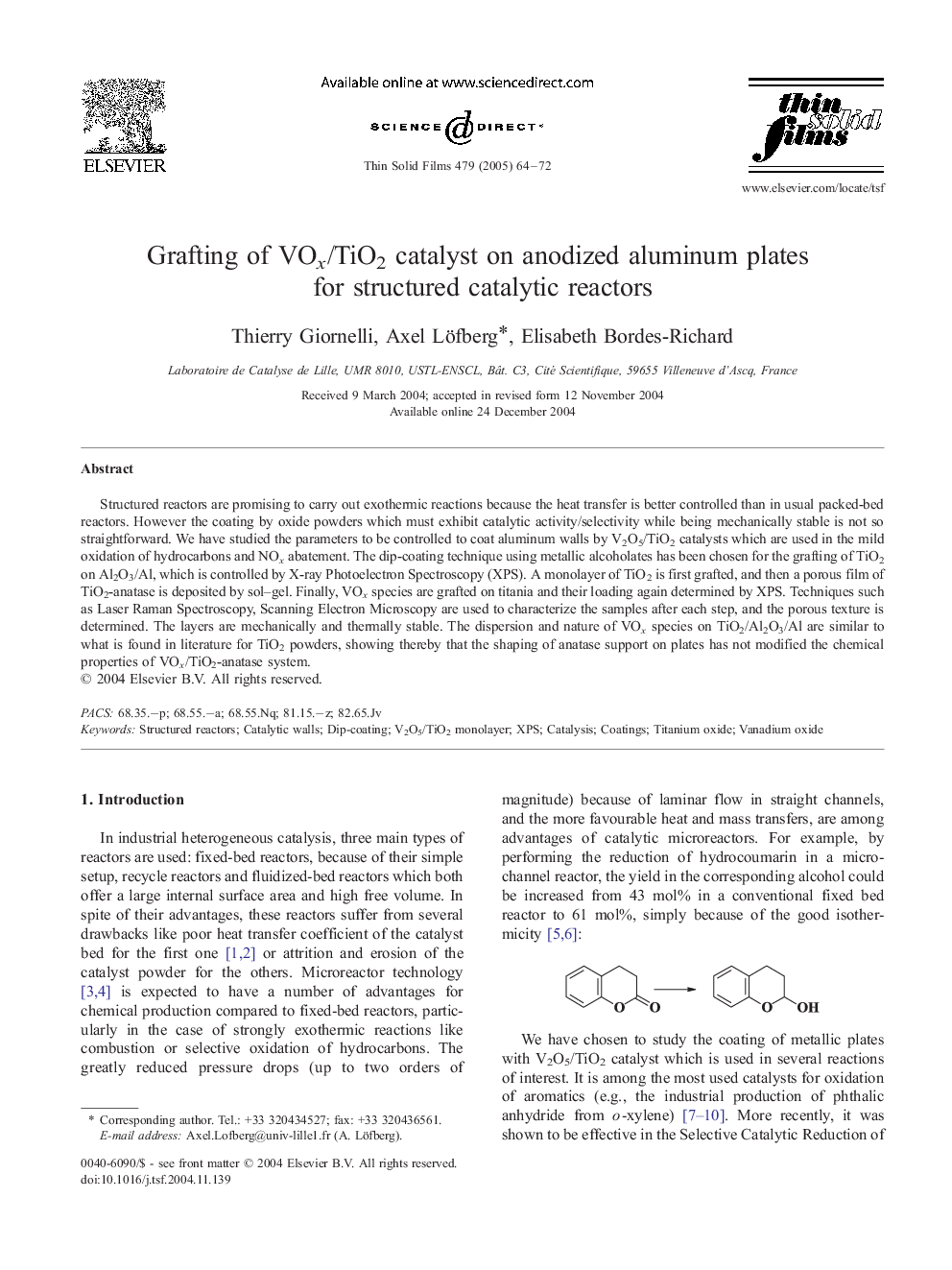| Article ID | Journal | Published Year | Pages | File Type |
|---|---|---|---|---|
| 9812727 | Thin Solid Films | 2005 | 9 Pages |
Abstract
Structured reactors are promising to carry out exothermic reactions because the heat transfer is better controlled than in usual packed-bed reactors. However the coating by oxide powders which must exhibit catalytic activity/selectivity while being mechanically stable is not so straightforward. We have studied the parameters to be controlled to coat aluminum walls by V2O5/TiO2 catalysts which are used in the mild oxidation of hydrocarbons and NOx abatement. The dip-coating technique using metallic alcoholates has been chosen for the grafting of TiO2 on Al2O3/Al, which is controlled by X-ray Photoelectron Spectroscopy (XPS). A monolayer of TiO2 is first grafted, and then a porous film of TiO2-anatase is deposited by sol-gel. Finally, VOx species are grafted on titania and their loading again determined by XPS. Techniques such as Laser Raman Spectroscopy, Scanning Electron Microscopy are used to characterize the samples after each step, and the porous texture is determined. The layers are mechanically and thermally stable. The dispersion and nature of VOx species on TiO2/Al2O3/Al are similar to what is found in literature for TiO2 powders, showing thereby that the shaping of anatase support on plates has not modified the chemical properties of VOx/TiO2-anatase system.
Keywords
Related Topics
Physical Sciences and Engineering
Materials Science
Nanotechnology
Authors
Thierry Giornelli, Axel Löfberg, Elisabeth Bordes-Richard,
